The Uncertainty Factor
Does a New Fault Line Discovery Put Diablo Canyon Power Plant in Jeopardy?
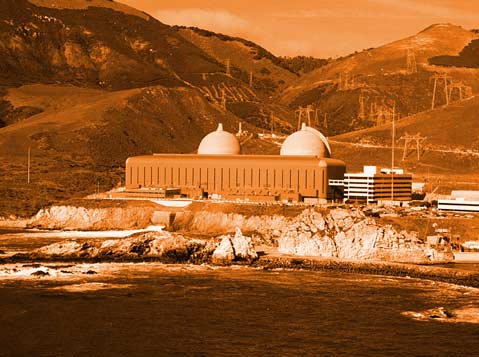
An ominous sense of déjà vu afflicts the Diablo Canyon Power Plant, perched along the lip of an otherwise spectacular stretch of coastline 80 miles north of Santa Barbara. In the late ’60s, one year after Pacific Gas & Electric (PG&E) was first given permission to begin construction on the plant, geologists discovered a monster fault capable of generating a 7.5 earthquake just three miles offshore of Avila Beach. The discovery of the Hosgri Fault — named after the two Shell Oil geologists who mapped it — sent Diablo Canyon’s future into a tailspin for six years. An animated, grassroots anti-nuke campaign began, during which 10,000 people were arrested for acts of civil disobedience. At last, and at great expense, Diablo Canyon was rebuilt to withstand the worst Hosgri quake probable, and by the mid 1980s, the plant was delivering 2,200 megawatts of electricity a year, enough to power nearly two million California households. For the last 22 years, the Hosgri Fault was the defining seismic factor concerning the Diablo Canyon nuclear plant.
But 15 months ago, the seismic picture got a whole lot more complicated. And more troubling.
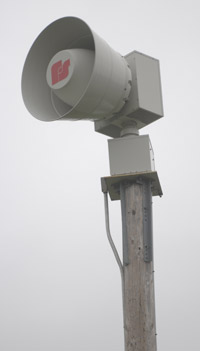
That’s when a team of United States Geological Survey (USGS) geologists revealed a new offshore fault — hitherto unknown — even closer to the nuclear facility than Hosgri. The news came as a bombshell, especially since the plant was beginning its relicensing process. Just three weeks before, high-ranking PG&E official Mark Krausse had declared, in a letter to state energy officials, “We believe there is no uncertainty regarding the seismic setting and hazard at the Diablo Canyon site.”
The true implications of this discovery remain the focus of much speculation and debate. Nuclear Regulatory Commission (NRC) officials and PG&E executives have insisted there’s no cause for alarm; the plant, they maintain, is designed to withstand far more force than the new fault — dubbed Shoreline — could possibly dish out. The new fault, they estimate, is 15 kilometers long, 12 kilometers deep, and located 1,600-1,800 feet directly offshore from Diablo Canyon. Based on these measurements, they’ve estimated the Shoreline Fault packs a maximum payload of 6.5 on the Richter scale. While that’s hardly insignificant, it remains 10 times less than the maximum seismic disruption of a Hosgri-generated quake. If Diablo can withstand the pent-up energy coiled along the 90-mile Hosgri Fault, these officials insist, it certainly can withstand whatever rage Shoreline can inflict.
And they could be absolutely right.
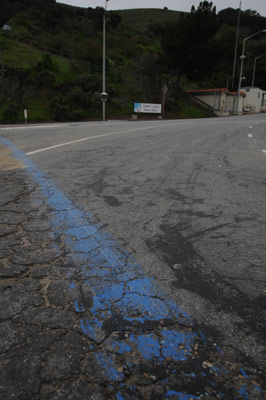
But Tom Brocher, the chief geologist who led the USGS team that discovered Shoreline, said much remains unknown about the exact location, dimensions, and dynamics of the new fault. “Within that uncertainty factor, you could get it [the fault] underneath the plant,” Brocher said. He stressed there’s no evidence to indicate the fault is actually under the plant. “This is all speculative,” he cautioned. “But it’s plausible. It’s possible. It’s not really pushing the data hard to do it.”
If this were to be proven, Brocher added, “You’re bringing into the picture the possibility that an earthquake could crack the ground surface.” The prospect of such a calamity — with two nuclear reactors operating above ground and pools of spent fuels so dangerous they have to be kept submerged in water at least five years before they can be moved to steel-reinforced concrete casks — is the stuff of nightmarish disaster scenarios.
Brocher said when PG&E first began construction on the plant, their geologists scoured the area for evidence of underground faults, but found none.
For PG&E, the report of the new Shoreline Fault could not come at a worse time. Late last November, the politically powerful utility company — headquartered in San Francisco — submitted an application to renew its operating license for Diablo Canyon’s twin-reactor power plant for another 20 years. Under any circumstances, questions of seismic safety would have loomed large during public hearings, the second of which were conducted by the NRC this week in San Luis Obispo. Fueling the urgency behind this debate are all the uncertainties hovering over the newly discovered Shoreline Fault. And, as the recent earthquakes in Haiti and Chile — 7.1 and 8.8, respectively — demonstrated, the stakes could not get much higher.
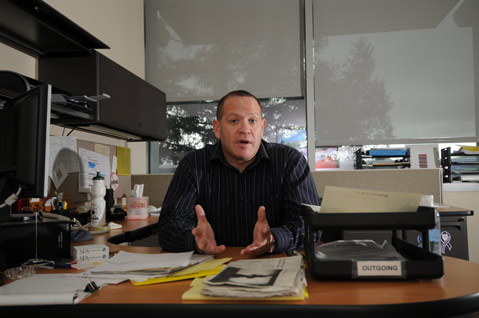
An Environmental Midlife Crisis
When Diablo Canyon was first proposed more than 40 years ago, the environmental movement was in its infancy. Today, as Diablo approaches relicensing, the environmental movement has entered a midlife crisis brought on, in part, by the apocalyptic urgency of climate change. Back then, nuclear power was just bad, end of discussion. Today, it’s embraced by some environmentalists as a low-carbon bridge technology, a necessary evil in the face of global warming. President Barack Obama argued in favor of nuclear energy during his State of the Union address, and two weeks ago, he backed up the rhetoric by offering $8 billion in federal construction loan guarantees for two proposed nuclear plants in Georgia. If built, these plants would be the first nuclear generators constructed in the United States since the 1970s. California, home to two of the nation’s 104 nuclear power plants, will not allow more plants to be built until the issue of nuclear waste disposal has been resolved.
The NRC wields the ultimate authority over Diablo Canyon’s relicensing. Its staff and five appointed commissioners must determine what issues can and cannot be addressed. Mostly, the NRC will focus on the integrity of the plant itself: What parts need to be replaced? Which ones have weathered the wear and tear unique to a nuclear power plant? Conspicuously not on the table are any of the hot-button issues: nuclear waste storage, susceptibility to terrorist attack, government subsidies, and, of course, seismic safety hazards. For Diablo Canyon’s staunchest critics — led by San Luis Obispo’s Mothers for Peace and the Alliance for Nuclear Responsibility — all of these issues are of concern. But none are quite so immediately in the community’s face as earthquakes. However, as PG&E spokesperson Kory Raftery explained, earthquakes are outside the purview of the current process. “There are issues you must address in the application, and seismic is not one of them,” he said.
That’s because as a condition of its original permit, PG&E must devote ongoing and continuous attention to seismic safety considerations. “From a licensing standpoint, we have committed to the NRC to do research on the seismic challenges all the time we operate,” said PG&E’s Loren Sharp. “We’re never not doing it; it’s continuous.” Or, as NRC spokesperson Lara Uselding put it, “The seismic element is too important to wait for a plant to submit a license renewal. Seismic review and oversight is an ongoing process.”
To that end, the NRC has undertaken three major hazard studies at Diablo Canyon since 1973. In addition, Uselding said the NRC reviewed PG&E’s analysis of the risk posed by the new Shoreline Fault and concurred it fell within parameters of the plant’s design thresholds. The NRC also was reviewing new data on the seismicity of the entire Central Coast — both offshore and onshore — now being developed by the USGS team, led by Brocher. And PG&E just submitted plans to the California Public Utilities Commission to spend up to $17 million on state-of-the-art, high-tech, 3-d studies of the onshore and offshore seismology surrounding the plant. All this research will take place at roughly the same time PG&E’s renewal application wends its way throughout the NRC process. According to the fine print of timelines released by PG&E and the NRC, it appears the relicensing should be complete about a year before the seismic studies are released. But according to some government sources, the relicensing process takes much longer than the fine print indicated.
Either way, certain issues remain. What’s really known about the seismology surrounding the Diablo Canyon plant and what’s merely surmised? Who gets to decide? When does that information get released? Who reviews it? And what weight, if any, should it be given when assessing PG&E’s relicensing application?
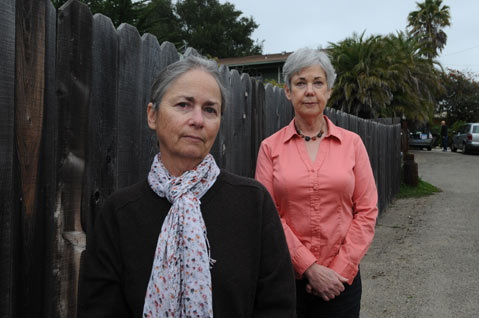
Mothers and Warriors
Anti-nuke activists like Rochelle Becker, founder of the Alliance for Nuclear Responsibility, and Jane Swanson, spokesperson of Mothers for Peace, worry that PG&E is attempting to secure a new 20-year operating license before any of the seismic studies now on order can be completed. As seasoned warriors battling against PG&E, these two women make no attempt to hide their suspicions. The seismic studies, they noted, won’t be complete for three years. But the relicensing application is scheduled to be wrapped up in two years. “What’s the rush?” asked Swanson, noting that PG&E’s licenses to operate Diablo Canyon’s two nuclear reactors don’t expire until 2024 and 2025, respectively. “That’s 14 and 15 years away. We have time.” And Becker noted that PG&E expects to spend $85 million to renew its license for Diablo Canyon. By contrast, the seismic studies will cost $17 million. The company will seek permission from the California Public Utilities Commission to recoup all these costs from ratepayers. “Doesn’t it make sense to spend the $16 million on the seismic studies first?” Becker asked. “Maybe they’ll discover there’s no problem. If so, cool. But maybe they’ll discover that the cost to make the plant safe is so expensive it’s not worth it. I think they’ve put the cart before the horse.”
Swanson focuses her arguments in terms of public safety and has been fighting with the NRC since 1973, when Mothers for Peace took the lead in opposing the Diablo Canyon plant. For the past seven years, Mothers for Peace has been waging nonstop legal warfare to compel the NRC to conduct an environmental evaluation of a possible terrorist air strike on the spent fuel rod storage casks — 140 having been permitted. Although the Mothers have prevailed every step of the way, the NRC has vigorously resisted. The Mothers sued most recently after the NRC simply declared the risks to be “insignificant” and released an eight-page opinion to that effect, which offered no justification.
At a hearing hosted by the NRC in San Luis Obispo two weeks ago, Swanson noted how an NRC official erroneously told the crowd that the Federal Aviation Administration (FAA) had declared the airspace over Diablo Canyon a no-fly zone. Instead, she said, the FAA posted a “no loitering” advisory. At the time, Swanson good-naturedly corrected the official, but later commented, “It’s kind of sad when someone from the NRC needs someone from Mothers for Peace to tell them something so basic. They should know.”
Becker, who began her activist work with Mothers, formed the Alliance for Nuclear Responsibility five years ago in hopes of dragging state agencies like the California Public Utilities Commission (which controls the rates utility companies can charge customers) and the California Energy Commission (which sets energy policy) into the fray. Rather than focusing on safety, Becker argues reliability and cost. She’s quick to point to a 1987 report by the Utilities Commission blaming PG&E for wracking up $4.4 billion in avoidable costs during construction of the Diablo Canyon plant. The most famous snafu was discovered in 1981 by a 25-year-old engineer, John L. Horn, who, on the job less than a year, pointed out that for the previous four years, construction crews had been reading an essential engineering diagram for one of the reactor containment domes upside down. That, too, sent PG&E’s construction crews back to the drawing board.
Together, Swanson and Becker are hoping to put the NRC’s license renewal process on hold until the preliminary seismic studies can be competed. To this end, they’ve enlisted the support of San Luis Obispo County Supervisor Adam Hill, who submitted a letter saying as much to the NRC. Next week, Hill is hoping to get a majority of his fellow supervisors to sign on to such a request. “It’s no big thing,” said Hill. “It just seems logical. From a process point of view, it just makes people more trustful of the agencies involved.” Thus far, no other elected officials have signed on.
PG&E officials bristle at the notion they’re gaming the process. They point to a 2007 judgment of the Utilities Commission urging them to initiate the relicensing process no later than 2011. That decision was issued when PG&E requested permission to pass on to ratepayers the $17 million it would cost to conduct a license renewal feasibility study. If Diablo Canyon were not to be relicensed, the commission reasoned, that would cause the loss of 2,200 megawatts, or roughly enough to power three million homes. To find secure energy sources elsewhere would take a long time and cost roughly $470 million a year. Given the premium placed on low-emission energy in the age of global warming and climate change, finding a clean replacement source would be harder still. (Compared to energy generated by coal, oil, or natural gas, nuclear power’s carbon footprint is relatively tiny.) In response to the energy crisis that brought Arnold Schwarzenegger to power, California’s energy agencies — the Utilities Commission and the California Energy Commission — have been compiling long-term energy inventories as part of 10-year energy plans. To wait until 2020, the Utilities Commission concluded, “would be reckless and gambling with the public interest.”
But that same opinion also contained language opposed by PG&E, language requiring the utility to include long-term studies on the seismic stability and economic reliability of California’s two nuclear power plants in its renewal feasibility study. How that language got there is a story in itself, and illustrates how much political muscle and maneuvering is required to even look at the seismic safety of California’s nuclear power industry.
Seismology in 3-D
This story starts with Sam Blakeslee, the Republican member of the Assembly who represents Avila Beach and San Luis Obispo in Sacramento. Blakeslee, now 54, grew up in San Luis Obispo and remembers looking askance at the anti-nuke protesters demonstrating in front of Diablo Canyon. “I’m a pretty straight-laced, business kind of guy, and the idea of jumping the fence to listen to Jackson Browne [a regular performer at such sit-ins] is not in my background,” he recalled. Blakeslee studied geology, first at UC Berkeley and then at UCSB, where he earned a PhD studying earthquakes of the Central Coast. After graduating, he landed a job with Exxon.
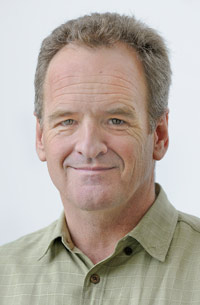
First elected to office in 2004, Blakeslee said he set out to read all the seismological studies pertaining to Diablo Canyon. Blakeslee, who stressed that he’s not anti-nuke, said, “Based on my background, I concluded that much of the work that needed to be done had never been done.” In 2005, he wrote a guest editorial in the San Luis Obispo Telegram-Tribune calling for three-dimensional seismological studies of the area — both onshore and offshore — around Diablo Canyon. This technique yields detailed images akin to CT scans, which can reveal how fault lines change pitch and direction far below the surface. Blakeslee argued such studies were routine in the oil industry; why should public agencies deprive themselves of vital information? In 2006, he introduced AB1632, a bill calling on the California Energy Commission (CEC) to conduct a thorough analysis of the state’s nuclear power plants, from a seismic, environmental, and economic perspective. PG&E opposed the bill. It also lobbied against provisions of the final report, released in November 2008. Specifically, PG&E argued that the three-dimensional testing techniques were overkill. When PG&E’s Mark Krausse argued, on October 22, 2008 that the seismic hazard at Diablo Canyon was already well understood, he also urged that the recommendation for 3-d studies be stricken from the report. On November 14, PG&E informed the NRC that the Shoreline Fault had just been identified. Four days later, the company told Blakeslee. Two days later, the CEC report on nuclear power plants was released. The 3-d study remained. Two weeks later, Blakeslee introduced a bill, AB42, that would require PG&E to perform such an analysis and would also require the Utilities Commission to allow the utility company to recoup the $17 million such studies might cost. It would also require that the studies be independently peer reviewed. Although the bill passed the Legislature, Governor Schwarzenegger vetoed it. The fact that Blakeslee, who was the Republican minority leader at the time, was allied against the governor in a host of major budget disputes, certainly did not help his bill’s chances. This January, PG&E submitted an application with the Utilities Commission to get funding approval to conduct the 3-d studies called for in AB42.
Today, Blakeslee is preparing to run for state Senate, as he will be termed out of the Assembly at the end of this year. Where Diablo Canyon is concerned, he remains acutely conscious of the gaps in scientific knowledge. Given those holes, he said there’s no way the NRC can determine whether the Diablo Canyon plant can withstand the greatest seismic punch the newly discovered Shoreline Fault is capable of packing. “How far does the fault extend to the northwest? To the southeast? Does it intersect with the Hosgri Fault?” Blakeslee asked. “Until we know, it is impossible to assess the upper limit of its capacity to generate an earthquake.”
Blakeslee explained that earthquakes pose different hazards depending on their distance. More analysis is required, he believes, to weigh the relative impacts of an earthquake from a few hundred feet away as opposed to one a few miles away. “We know earthquakes occur in a line close to the plant. We just don’t know how close,” he said. Blakeslee recognizes the theoretical possibility that the Shoreline Fault extends underneath the Diablo Canyon plant, but also said he’s seen no evidence to support it or heard anyone seriously argue it. If it did exist under the plant and there was a shift, however, “It would produce a catastrophic rupture no facility could survive,” he said. “No engineering strategy could protect against that.” But short of such doomsday scenarios, there are real and immediate risks. Blakeslee harkened to the Japanese earthquake of 2007 that rattled the biggest nuclear power plant on the planet. Although the quake delivered considerably more force than the plant was designed to withstand, little actual damage was done. But 300 gallons of radioactive cooling water did escape into the Sea of Japan. For tourist-dependent communities like San Luis Obispo and Santa Barbara, he argued, even a relatively benign accident could inflict massive economic damage.
Blakeslee has not embraced efforts to stall the relicensing process pending release of the seismic study results. “It would be premature to involve myself until I get a better handle on the timelines,” he said. “I believe PG&E wants to have the best information in as timely a way as possible. I’m just doing what I can to make sure they get it.”



